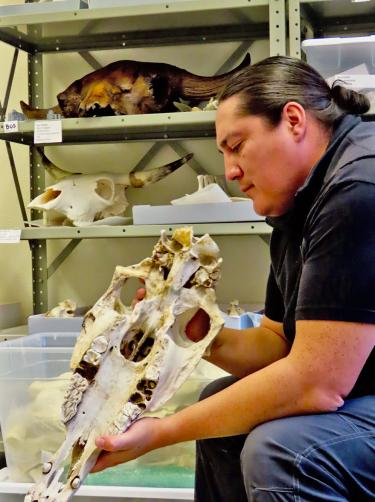
Principal investigator
William Taylor

Funding
National Science Foundation (NSF)

Collaboration + support
Anthropology; University of Colorado Museum of Natural History; University of New Mexico; University of Oklahoma; University of Toulouse
Learn more about this topic:
 New research has revealed that horses may have spread throughout the American West much sooner and faster than many scholars believed.
New research has revealed that horses may have spread throughout the American West much sooner and faster than many scholars believed.
The study was a monumental effort: It brought together researchers from 15 countries, including archaeologists from CU Boulder, and numerous Native American scholars, including members of the Lakota, Comanche and Pawnee nations. They used DNA evidence, radiocarbon dating and osteology to analyze roughly two dozen sets of animal remains.
Horses, they discovered, may have traveled as far north as Wyoming and Idaho by at least the first half of the 17th century, or about 100 years before European accounts suggested.
The findings line up with a wide range of Indigenous oral traditions—and help to reveal the central role these animals have played in the lives of many Native Americans, said William Taylor, lead author of the study and curator of archaeology for the University of Colorado Museum of Natural History.
Photo inset: Lakota archaeologist Chance Ward inspects a horse skull at the CU Museum of Natural History. Photo by: Samantha Eads.
